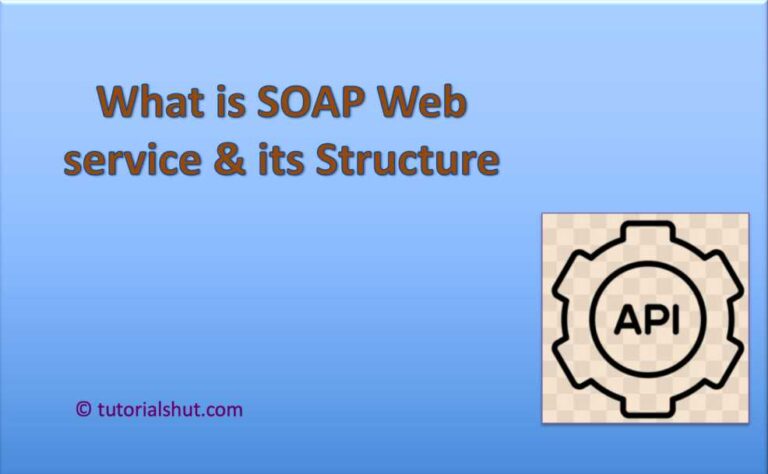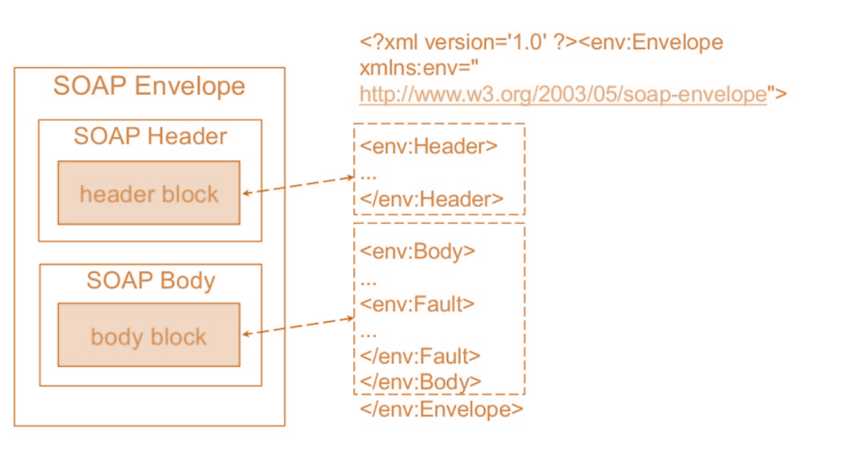API Testing
What is API?
API Testing Definition
Tools used for API Testing
API Testing types
Benefits of API Testing
Bug & Defects detects by API Testing
Web Service Definition
Types of WebServices
Web Services Components
WebServices Architecture
Difference b/w Web services & API
What is SOAP webService
SOAP Message Structure
API Testing Definition
Tools used for API Testing
API Testing types
Benefits of API Testing
Bug & Defects detects by API Testing
Web Service Definition
Types of WebServices
Web Services Components
WebServices Architecture
Difference b/w Web services & API
What is SOAP webService
SOAP Message Structure
What is SOAP Web service & its Structure
This article will present you with a complete idea about SOAP Web service and how the SOAP message look like .

What is SOAP WebService?
- SOAP stands for Simple Object Access Protocol.
- It is is a W3C standard
- SOAP is an XML-based messaging protocol for exchanging information among computers.
- It is a XML-based protocol for accessing web services.
- It defines a set of rules for structuring messages that can be used for simple one-way messaging but is particularly useful for performing RPC-style (Remote Procedure Call) request-response dialogues
- SOAP is designed to communicate via Internet
- SOAP is based on XML
- SOAP is platform and language independent
- SOAP enables client applications to easily connect to remote services and invoke remote methods.

SOAP message Structure
SOAP message consists of three parts:
-
- SOAP Envelope
- SOAP Header (optional)
- SOAP Body
SOAP message Skelton:
<?xml version="1.0" encoding="UTF-8"?> <soap:Envelope soap:encodingStyle="http://soap.org/soap/encoding/" xmlns:xsd="http://www.w3.org/2001/XMLSchema" xmlns:soap="http://xmlsoap.org/soap/envelope/" xmlns:xsi="http://www.w3.org/2001/XMLSchema-inst"> <soap:Header> <!-- Transactions, priorites, etc. --> </soap:Header> <soap:Body> <!-- Some content --> </soap:Body> </soap:Envelope>
SOAP Envelope:
-
- The SOAP Envelope construct defines an overall framework for expressing what is in a message and who should deal with it.
- The Envelope is the top element of the XML document representing the message.
- The Envelope element is always the root element of a SOAP message.
- The Envelope element contains an optional Header element followed by a mandatory Body element.
Example:
<SOAP-ENV:Envelope
xmlns:SOAP-ENV="http://schemas.xmlsoap.org/soap/envelope/"
SOAP-ENV:encodingStyle="http://schemas.xmlsoap.org/soap/encoding/"/>
<SOAP-ENV:Body>
<m:GetLastTradePriceResponse xmlns:m="Some-URI">
<Price>67</Price>
</m:GetLastTradePriceResponse>
</SOAP-ENV:Body>
</SOAP-ENV:Envelope>
SOAP Header:
-
- Header is optional
- SOAP header element can contain information such as authentication credentials which can be used by the calling application.
- It can also contain the definition of complex types which could be used in the SOAP message.
- By default, the SOAP message can contain parameters which could be of simple types such as strings and numbers, but can also be a complex object type.
Example:
<soap:Header> <!-- security credentials --> <s:credentials xmlns:s="urn:examples-org:security"> <username>abc</username> <password>test123</password> </s:credentials> </soap:Header>
SOAP Body:
- The Body element represents the message payload
- The SOAP body is a mandatory element that contains the application-defined XML data being exchanged in the SOAP message.
- Immediate child elements of the SOAP Body element may be namespace-qualified.
Example:
<soap:Body> <x:TransferFunds xmlns:x="urn:examples-org:banking"> <from>22-342439</from> <to>98-283843</to> <amount>100.00</amount> </x:TransferFunds> </soap:Body>

